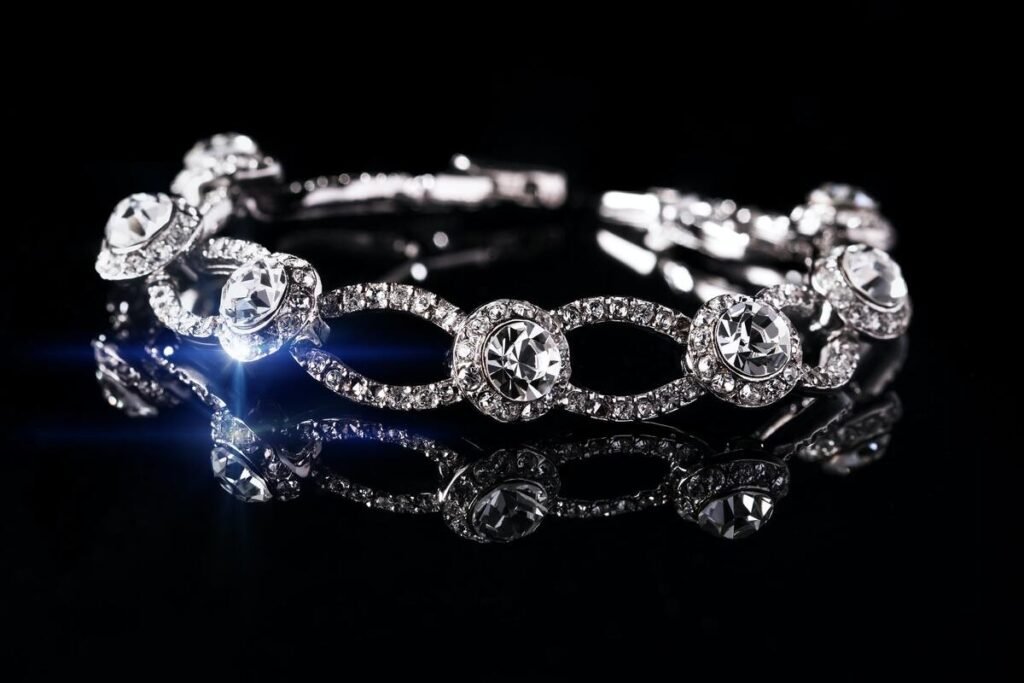Diamonds attract people’s eyes with their fiery sparkle and beautiful cut. Indeed, transforming a rough diamond into a valuable center stone entails two things from a master diamond cutter. These are the diamond polish and symmetry.
How Polish and Symmetry Affect A Diamond
Even to the untrained eye, these two factors work their magic, giving a well-polished and symmetrical stone an edge compared to others of average rating. Before buying a diamond ring or jewelry piece, make sure you know the ins and outs of the technical world of a diamond’s finish.
Differentiating The Two Aspects of the Diamond Cutting Process
Two factors that influence the overall grade and value of a diamond include polish and symmetry. Since some expect an excellent rating to mean premium quality, some buyers may tend to fixate on the need to buy perfect or near-perfect diamonds with these ratings.
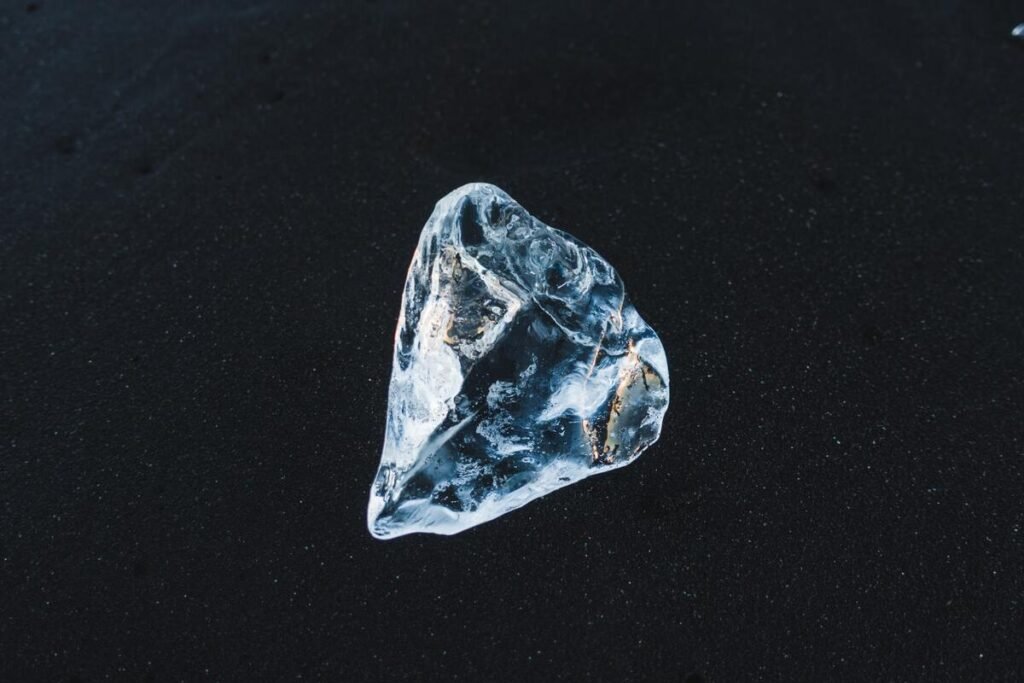
In reality, these two facets have several layers of considerations. Institutions like the Gemological Institute of America (GIA) regularly conduct studies and observational research to ensure that consumers can be guided on how to properly understand and interpret certain grading factors.
Interestingly, the findings of such research show that a combination of different factors can influence buying decisions. In terms of symmetry and polish, customers may want to take a closer look, especially if they are particular about the overall finish and sparkle of the diamond.
Is polish or symmetry more important in a diamond?
It’s hard to pick one factor over the other, just as seasoned jewelry buyers will consider all 4Cs in their purchase decision. Both symmetry and polish factor into the processing stages of the diamond.
Both can have a major influence on whether your diamond will have a polished shine or if light will get distorted and make the diamond appear duller and less premium. Understanding how both factors work can help you decide how to get a balance of both, so you will also not break the bank for a single ring.
Understanding Diamond Symmetry
As the name suggests, symmetry refers to how equal both sides of the diamond appears from the perspective of the holder. For a diamond grader, this means looking at the alignment from the crown to the pavilion.
People who ask “what is the symmetry of a diamond?” may be referring to the arrangement of facets and how similar these facets are due to the diamond’s cut. Most diamonds, even the fancy ones, tend to have symmetrical shapes. From round to heart and even to marquise shapes, a diamond’s symmetry emphasizes the more pleasing lines of the diamond’s shape.
Any deviations from the equal measurements of a diamond’s parts can result in an off-center look. However, a lot of this can ultimately be gauged on the microscopic level so graders can achieve an exact symmetry rating.
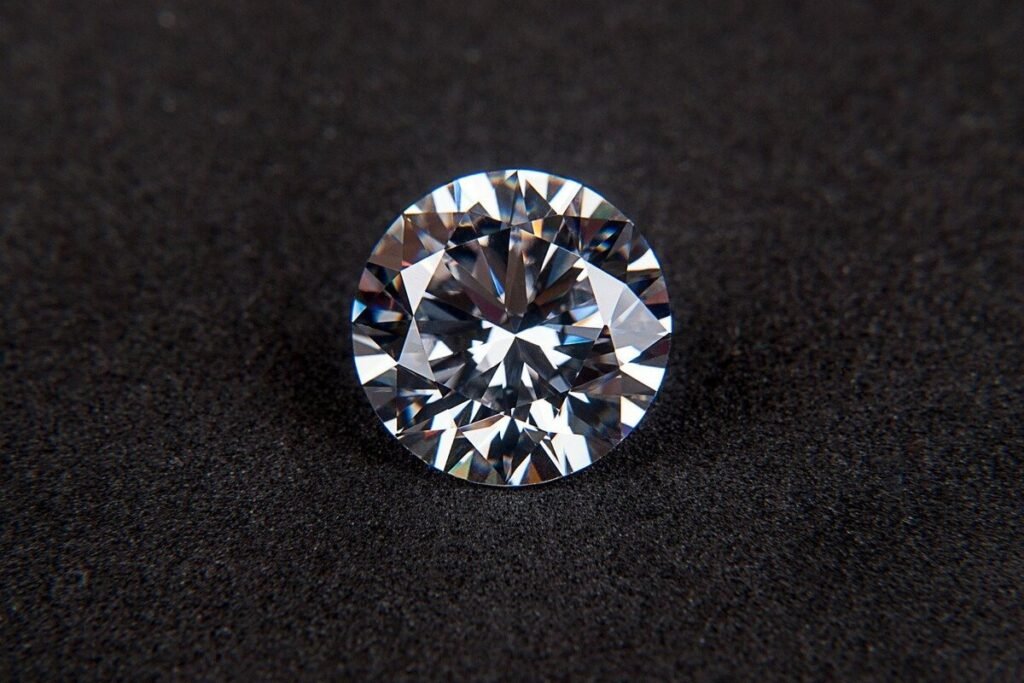
What is diamond symmetry?
On the physical aspect, gemologists look at the size and shape of the diamond facets using a microscope. Additionally, the alignment of the crown and pavilion, as well as the placement of the culet vis-a-vis the table all need to be considered.
One may be wondering, if this is the case, then every single diamond should have excellent symmetry to pass inspection. Some exceptions do exist, but this involves weighing the pros and cons of symmetry over other decisions like retaining more of the rough diamond.
Exceptions in diamond symmetry
According to Brilliance.com, diamond cutters may prefer to do away with symmetry if it means they can retain weight or avoid adding more inclusions. In some cases, it can be that the clients ask, especially if they do not want to change the carat size. But there are also times when these can be solved with a proper setting.
The important thing to note is that diamond symmetry follows five main rankings for any store. Gemologists may give diamonds the following ratings: Excellent, Very Good, Good, Fair, and Poor. Ideally, gemologists and jewelry makers tend to aim for diamond symmetry very good vs excellent. This makes it not only attractive on a ring, but also on the certification record.
But if it means sacrificing a big chunk of the rough diamond, an expert cutter may deviate from expectations. Some may prefer to plan out the cutting with deliberate off-center or unequal measurements on certain diamond parts.
Importance of symmetry in diamonds
Diamond polish and symmetry are important because they can affect the overall look and light reflection. For symmetry, the more excellent and good-rated ones tend to preserve the brilliance of light.
In other words, diamonds with poor symmetry tend to have a deviated shape. It also tends to have a misdirected transmission of light, which can reduce brilliance. Imagine paying for a premium-quality diamond that meets the other Cs—carat, clarity, and color—but fails immensely in the area of proper cutting. Not only will it lessen the value of the diamond on paper, but it will also affect how it looks set on the band.
More importantly, some diamond shapes need to be more symmetrical than others. Round diamonds, said to be among the more expensive and much sought-after shapes, need to look as close to a perfect circle rather than an oval. Fancy shapes like this pear-shaped diamond wedding ring and heart-shaped diamonds need to look symmetrical so the shape will look flawless.

Recognizing asymmetry in diamonds
To know if a diamond is asymmetrical or not, you need to know the basic parts of a diamond. The top view of the diamond features the table part. This tapers into the crown facet, which helps create the diamond’s brilliance. This section connects to the girdle facet, which is the thin cut that creates a ridge on the diamond’s side.
From here, the diamond narrows into the lower girdle facet and the pavilion facet. This ends with the tip or the culet, which is the bottom-most part of the diamond. Ideally, for any diamond shape, the path from the edge of the table to the culet should have the same measurements on either opposite sides of the diamond.
How diamonds can become asymmetrical
Knowing the answer to, “What is the symmetry of a diamond?” is just the first step of the equation. It’s also good to have an understanding of how a diamond can become asymmetrical.
Jewelers ideally look at six main areas of a diamond. The table-to-culet alignment should ensure that the center of the table will be aligned with the culet. Second, the table needs to be parallel to the girdle. Otherwise, it can look tilted from above.
When it comes to girdles, there are two points to watch out for. Avoid wavy girdles, as this can affect light refraction. Next, always examine the thickness of the girdle, as it needs to have the same thickness around the diamond. Avoid valley positions or it may also affect how the light shines on your diamond.
How alignment can throw off symmetry
Finally, the angles of the top and bottom areas of the diamond also matter. Crown angles can vary from different sides of the diamond. If the eight crown angles are not equal, it can create an off-center table. Pavilion angles can also vary, which usually relate to an off-center culet.
This shows that one off-positioning for your diamond can easily set off the symmetry of the entire stone. Symmetry may not be as visible at first glance, but it can have a domino effect of one facet being off-center, which can lead other areas to follow suit.
What is Polish in a Diamond?
Jewelers refer to polish as the overall smoothness of a diamond’s surface. Much of its requirements have to do with the reflections of distortions of light. Excellent polished diamonds tend to have crisp reflections and minimize light distortions. On the other hand, even a high clarity diamond can look dull with a poor polish.
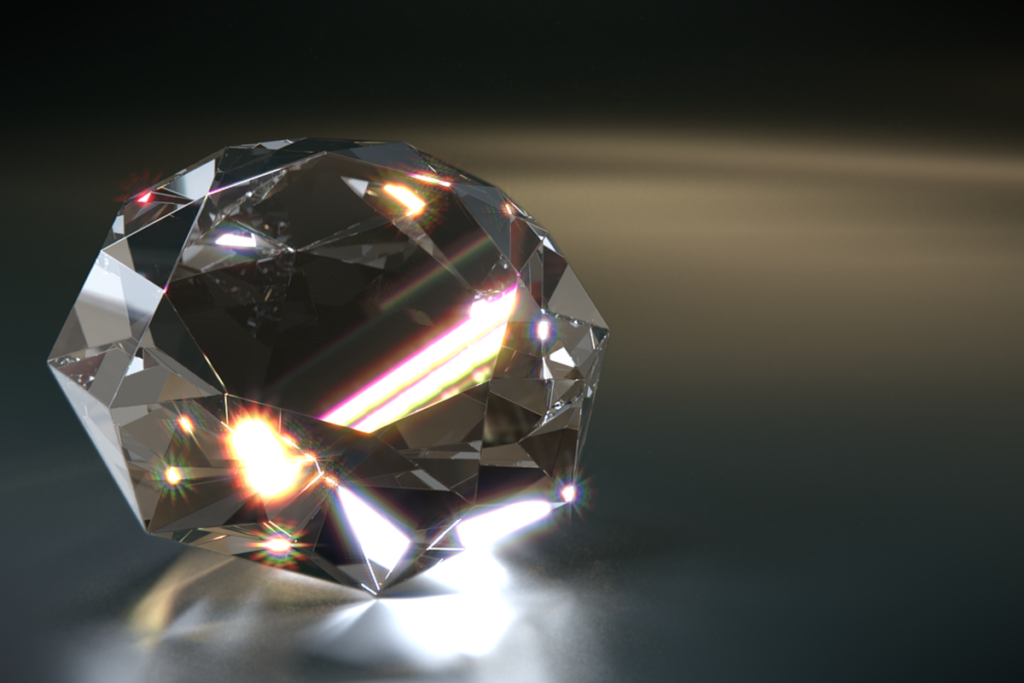
How many times do diamonds need to be polished?
The polishing process involves a number of steps to ensure the highest quality grade for a diamond. Apart from the actual smoothness of the surface, there are a few issues that can affect the procedure.
Contrary to how others expect, most diamonds tend to have some polishing marks left on the surface. Even the most premium craftsmanship can leave very fine lines, which already equate to an excellent polish rating.
Cutting flaws: An issue or part of the process?
Since every diamond needs to be polished from its rough state, jewelers may leave a mark as a necessary step in the process. Instead of being a result of poor cutting and polishing skills, blemishes can sometimes be left to properly maximize the rough diamond.
Some blemishes may include transparent scratches, small nicks in the facets or girdles, or abrasions. Pits and burn marks can also occur during the polishing stage This is not surprising considering the equipment used, such as the jeweler’s torch and polishing wheel.
Judging a diamond’s polish
What then is the difference between a diamond polish very good vs excellent? To the naked eye, it will not be noticeable. But on a 150x magnification, there may be barely visible polishing wheel marks for a good polish grade versus a near-flawless and mirror-like state for an excellent polish grade.
GIA has five specific criteria for polish grading. Excellent refers to very insignificant or no polish marks seen under 10X magnification. A very good rating will have polish features face up under magnification. A good rating tends to have less luster because of noticeable polish marks.
Fair rating brings this down further as the polish marks become even more obvious and impact luster. GIA gives diamonds a poor rating if they have very distinct polish marks even without magnification. The diamond can appear very dull due to these polish marks.
How to choose a polish grading?
Between excellent, very good, and fair ratings, it is clear that the differences for these ratings are only visible using magnification. Unless you are looking for a premium diamond for an investment, choosing the lowest of the three ratings will not significantly impact how your diamond looks.
Try avoiding the fair and poorly rated diamonds if your budget allows. The moment luster becomes compromised, it may influence other criteria in choosing your diamond.
Buying tips: Impact on price?
Polish and symmetry appear to be more distinguishable on paper than when one wears a fine jewelry piece. So the main question remains: is it a choice between polish and symmetry very good vs excellent? Or should you focus on your other criteria for buying jewelry?
Most jewelry experts will state that your preference will always matter. If there is one criterion that many jewelry buyers abide by, it’s their budget for the jewelry piece. However, in the current market, price differences due to varying grades in polish and symmetry may only shave off a few hundred bucks.
Diamonds with excellent or very good polish and symmetry do not come with a smaller price tag. But they are also not as common a find. If anything, these are spectacular stones, with the goal of setting the jewelry piece apart from the rest in different aspects.
Focusing on the 4Cs
Instead of getting stuck on knowing the specific grading for polish and symmetry, you may want to look at the 4Cs of diamonds. Remember, cut only makes up one of the main criteria, and even this can be affected by various factors.
In most cases, lower grades in polish and symmetry can only achieve a fraction of savings. This also gives the risk of possibly less sparkle and brilliance, especially for very asymmetrical cuts. Consider these diamonds in your search, but try to see how you can work in the other Cs of diamonds. This increases your chance of landing the best stone at your preferred price.
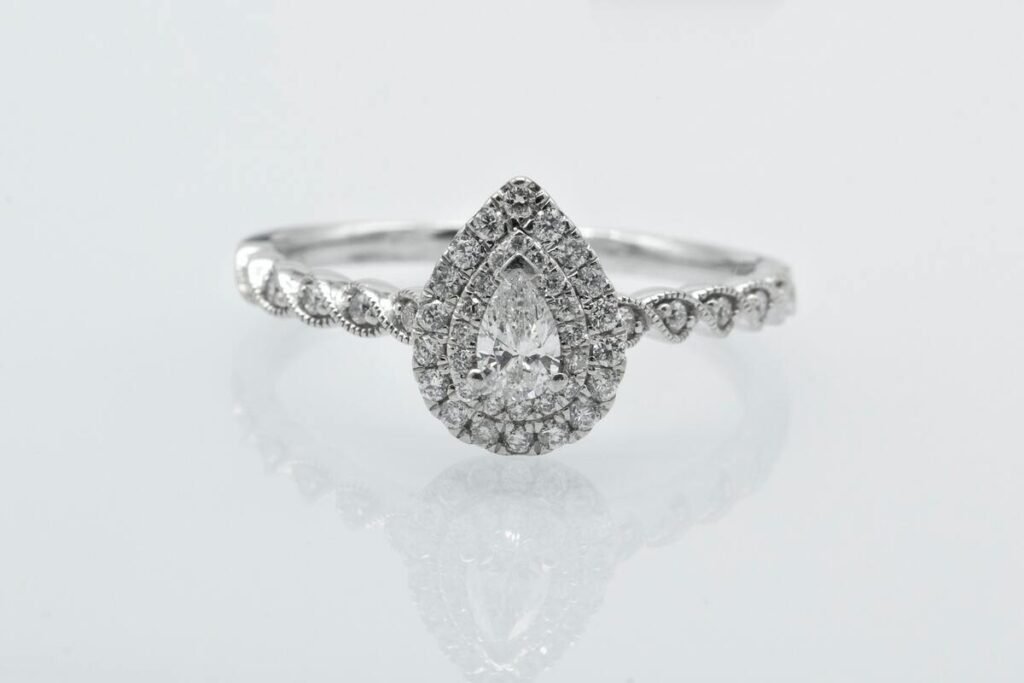
Additionally, the 4Cs can work to each other’s advantage, especially if you know what you are looking for. You can also benefit from having a trusted jeweler who will be willing to do negotiations. Jewelers can make adjustments to maximize your diamond’s sparkle when set in your preferred band. Check out this delicately set engagement ring, which uses the setting to set off the stone.
To learn more about a diamond’s cut, check out our article “No Cutting Corners: Why Is Diamond Cut Important.”

